#ribon
Text
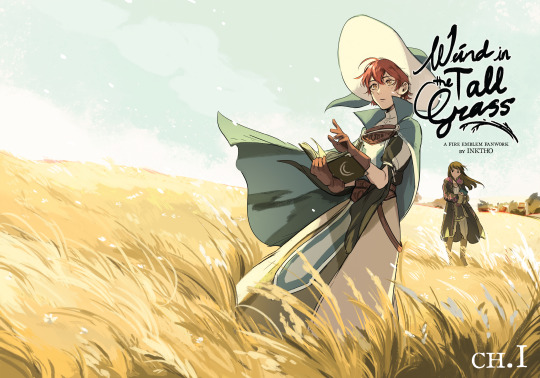
uploading this old thing. this is so....lol. i made it 2017-2018. it still kind of makes me happy to look back on though, which is why I want to continue it.
throwing it under the cut!! vvv enjoy [reads left to right!]
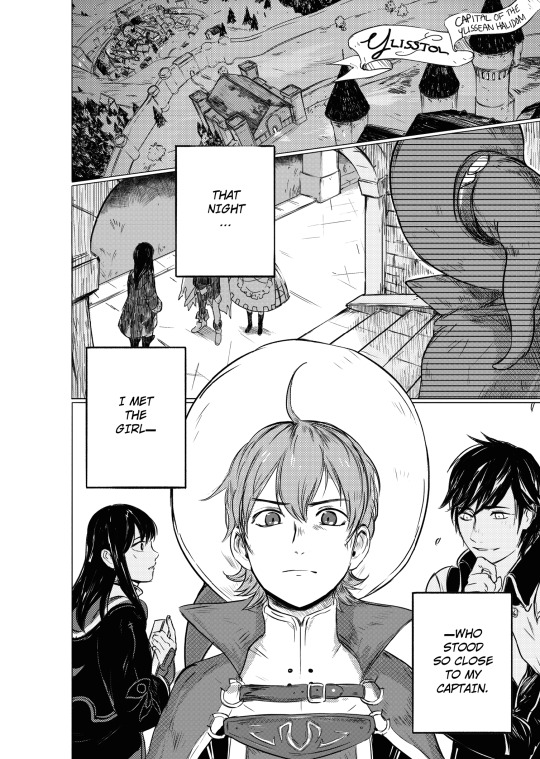


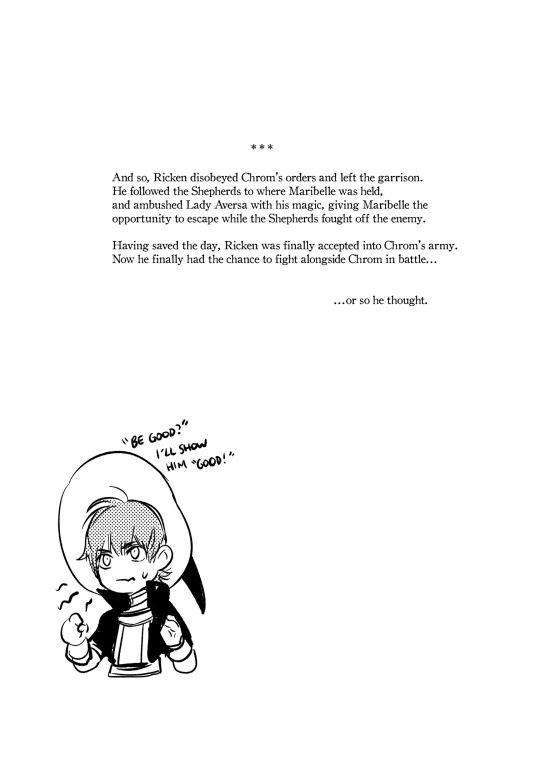



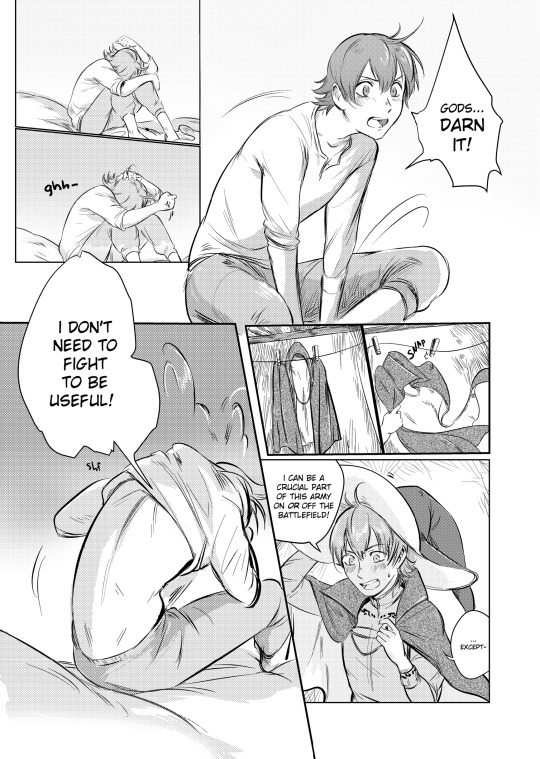


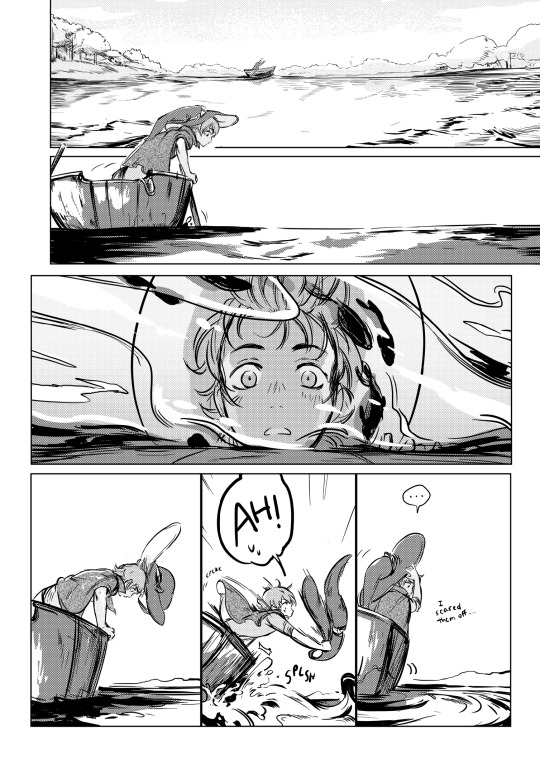
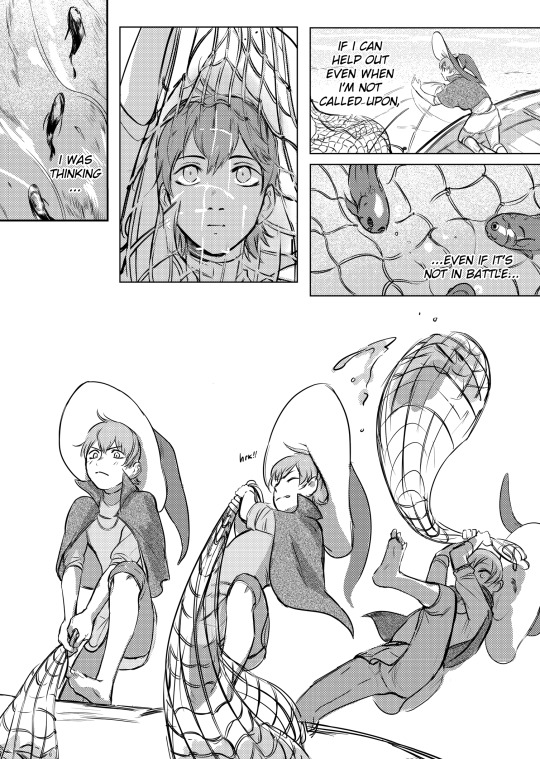

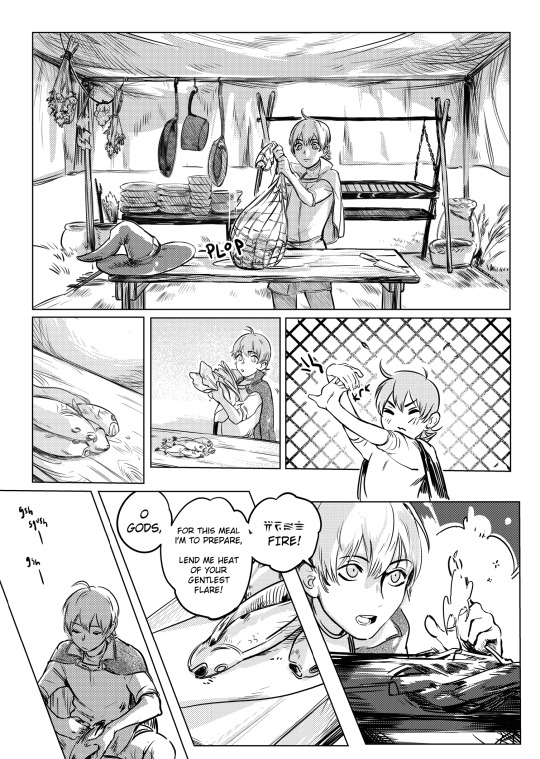







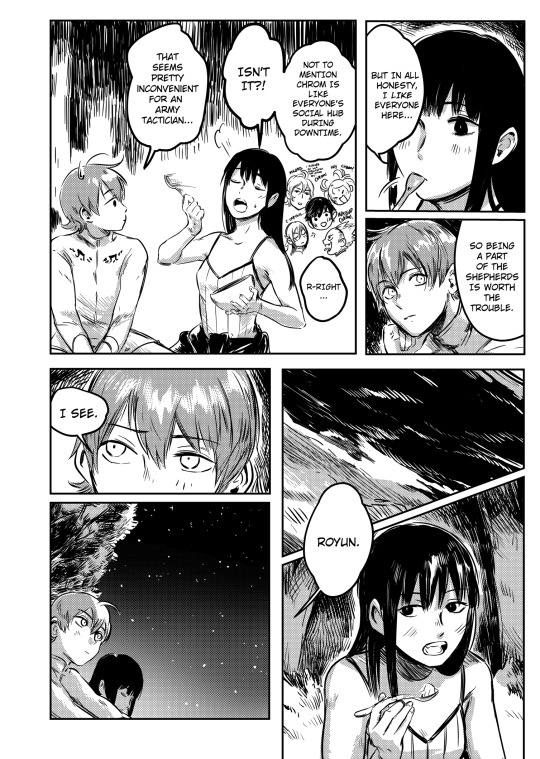

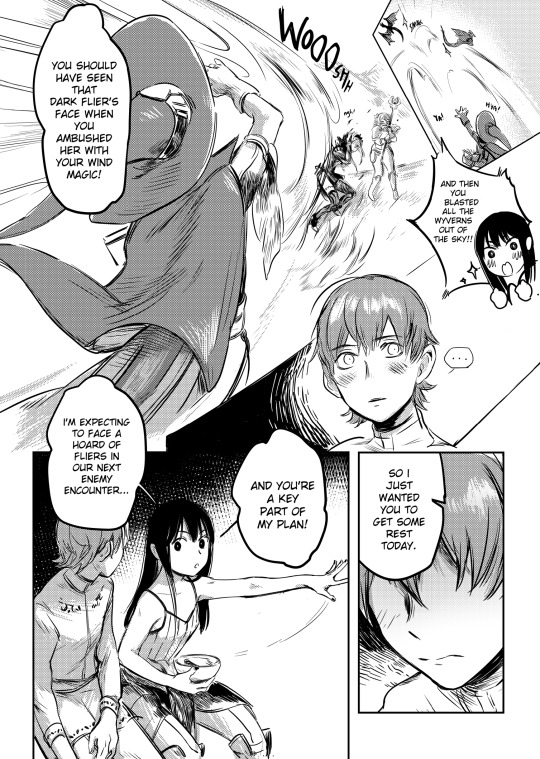
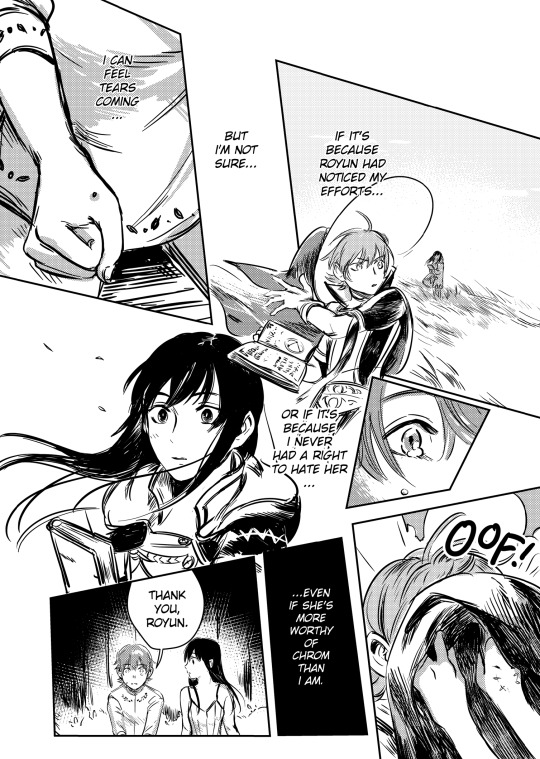
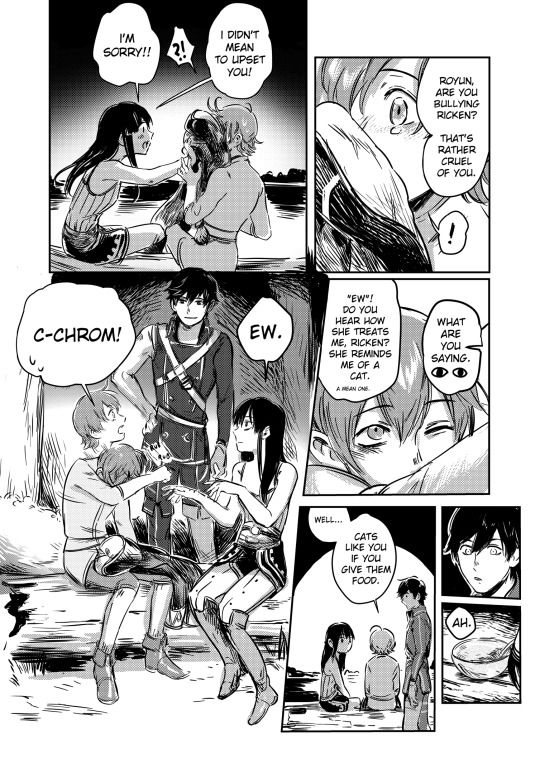

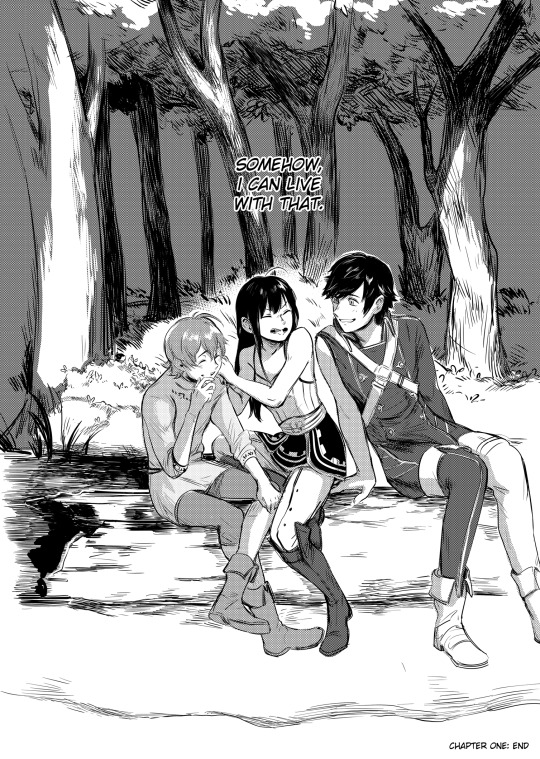
bonus:

319 notes
·
View notes
Text
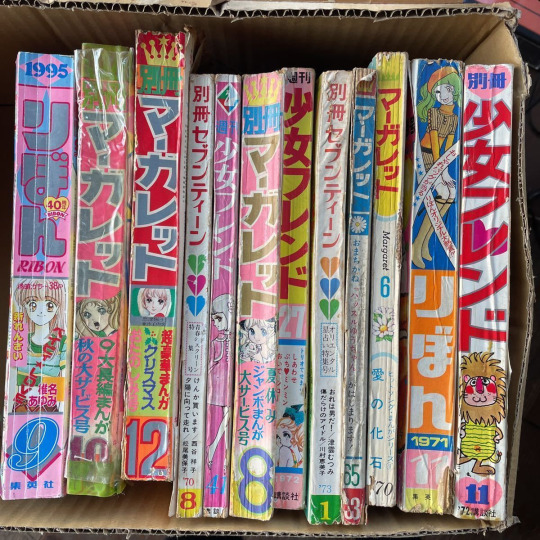
【古本】昭和レトロ 少女漫画 りぼん 別冊マーガレット 少女フレンド 別冊セブンティーン 当時物 まとめて
525 notes
·
View notes
Text
youtube
Watch the American Climate Leadership Awards 2024 now: https://youtu.be/bWiW4Rp8vF0?feature=shared
The American Climate Leadership Awards 2024 broadcast recording is now available on ecoAmerica's YouTube channel for viewers to be inspired by active climate leaders. Watch to find out which finalist received the $50,000 grand prize! Hosted by Vanessa Hauc and featuring Bill McKibben and Katharine Hayhoe!
#ACLA24#ACLA24Leaders#youtube#youtube video#climate leaders#climate solutions#climate action#climate and environment#climate#climate change#climate and health#climate blog#climate justice#climate news#weather and climate#environmental news#environment#environmental awareness#environment and health#environmental#environmental issues#environmental justice#environment protection#environmental health#Youtube
2K notes
·
View notes
Photo
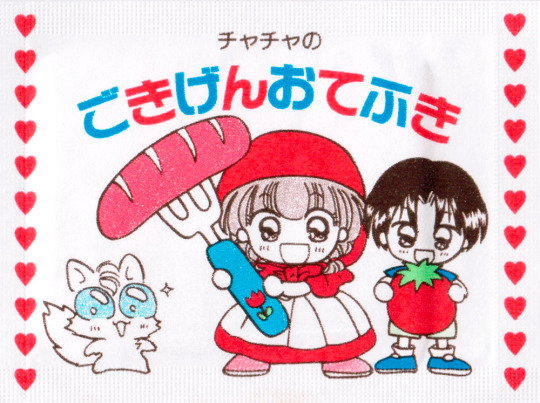
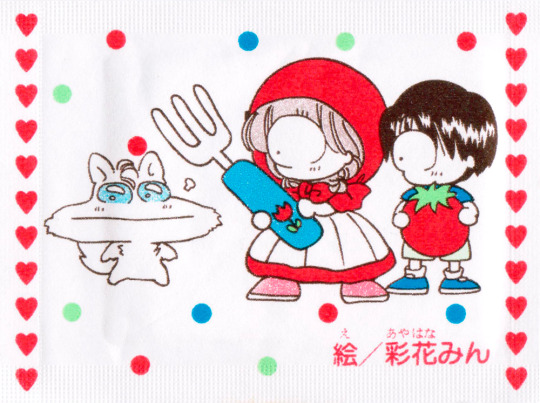
Akazukin Chacha "gokigen otefuki" -- Ayahana Min (October 1995)
832 notes
·
View notes
Text
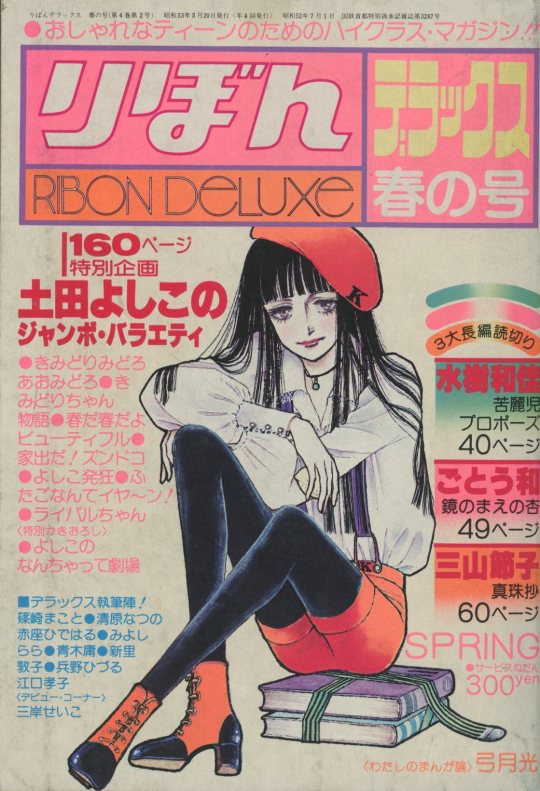
Ribon Deluxe (りぼんデラックス) / Shūeisha (集英社) / Spring 1978 issue
#vintage manga#shojo manga#retro shojo#70s manga#70s fashion#ribon#ribon magazine#shueisha#issue month: spring#りぼんデラックス#集英社
185 notes
·
View notes
Photo

ご近所物語 (Gokinjo Monogatari), Ai Yazawa
1K notes
·
View notes
Text

Series: Nurse Angel Ririka SOS
Artist: Ikeno Koi
Publication: Ribon Magazine (05/1995)
Source: Scanned from my personal collection
#nurse angel ririka sos#nurse angel ririka#ririka sos#moriya ririka#kanon#helena oujo#maruru#ikeno koi#koi ikeno#akimoto yasushi#yasushi akimoto#scan: hotwaterandmilk#ribon#shoujo#90s manga#mahou shoujo#magical girl#manga illustration#manga art#this features probably my favourite depiction of ririka's nurse angel form by ikeno#i just love the resolve in her eyes#gorgeous
149 notes
·
View notes
Text


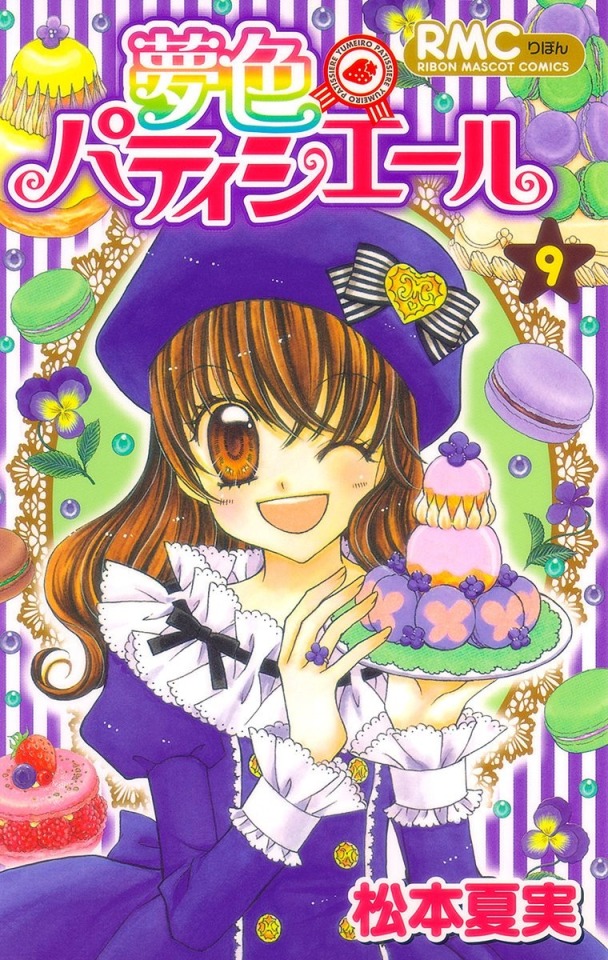


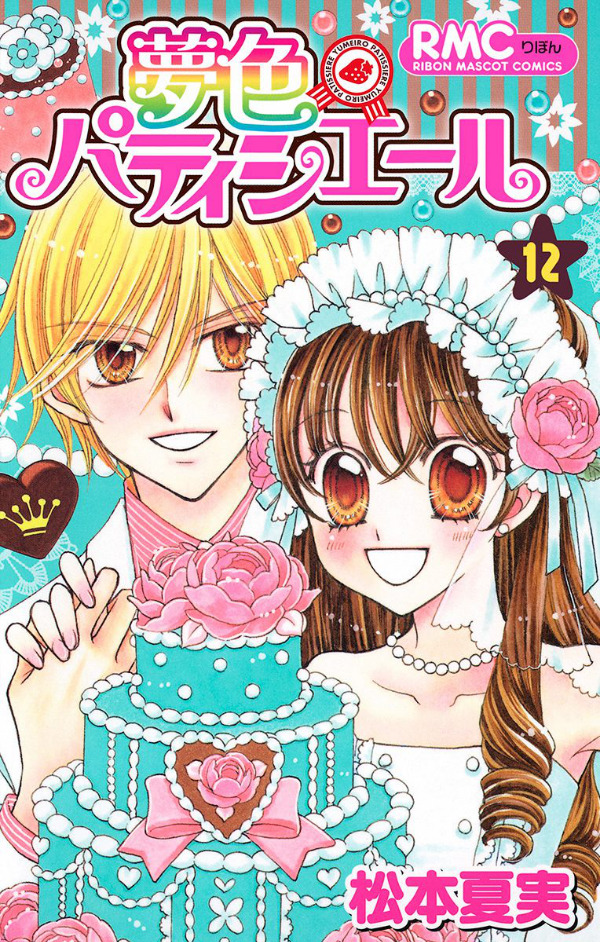
Yumeiro Patissiere by Matsumoto Natsumi
47 notes
·
View notes
Text
Shoujo Manga's Golden Decade (Part 2)
Shoujo manga, comics for girls, played a pivotal role in shaping Japanese girls’ culture, and its dynamic evolution mirrors the prevailing trends and aspirations of the era. For many, this genre peaked in the 1970s. But why?
Part 1
The Year of 24 Group
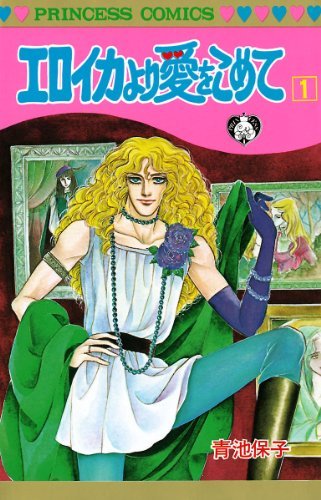
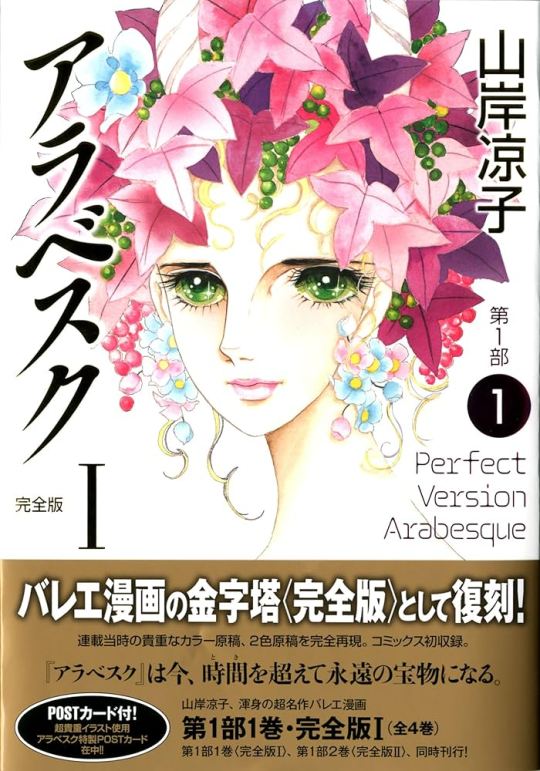
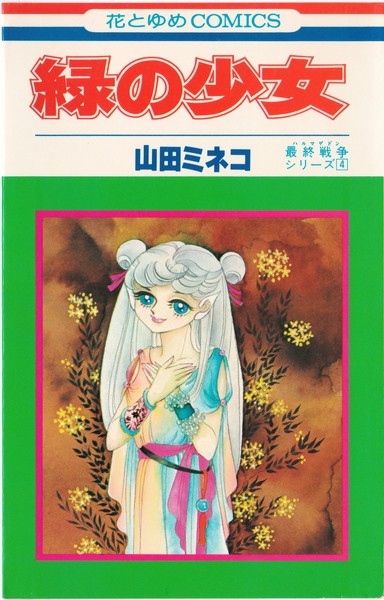

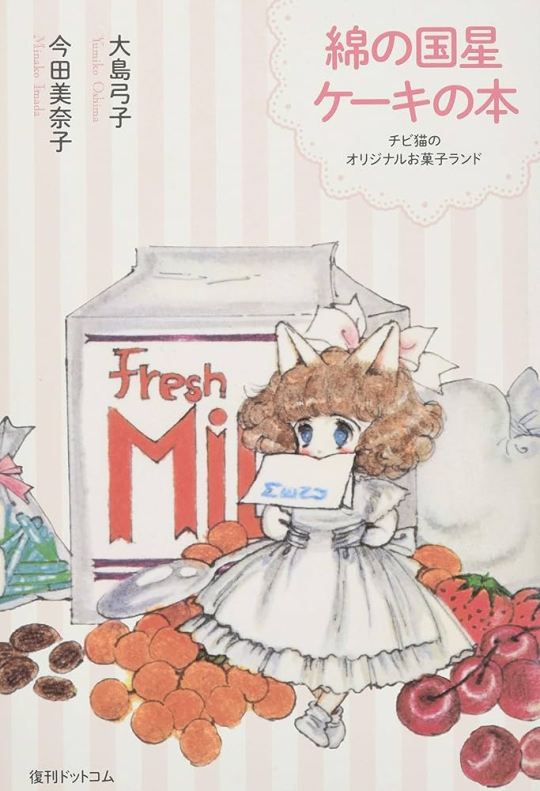

Some of the best-selling work by the Year 24 Artists (l-to-r): Yasuko Aoike's "From Eroica with Love," Ryoko Yamagishi's "Arabesque," Mineko Yamada's "Minori no Shoujo," Toshie Kihara's "Yomie no Ishibume," Yumiko Oshima's "The Star of Cottonland," Yuuko Kishi's "Tamasaburo."
Back in the early '70s, there was the prevailing notion that manga was for young kids. Despite the variety in themes, big magazines like Margaret, Shoujo Club, Nakayoshi, and Ribon were theoretically aimed at elementary school-aged girls.
In practice, the reality was more nuanced. Due to being published in Weekly Margaret, "The Rose of Versailles" was for kids. And it did very well with them. Yet, its revolutionary romance also appealed to broader audiences, exemplifying the crossover potential of shoujo manga. It was the title that opened the door for what is known as "the golden age of shoujo," which was further cemented by several other groundbreaking hits.
These hits widened the shoujo manga field, and soon, other editorial houses also wanted to cash in. Shogakukan, which published the powerful Weekly Shonen Sunday, entered the shoujo market in the late '60s. Shueisha and Shogakukan also partnered to form a keiretsu and open the Hakusensha publisher which deals mostly with shoujo manga.
That is the context in which a batch of artists known as "The Magnificent 24 Group" rose. And they were another key reason as to why '70s shoujo made such a mark. These manga-kas introduced themes such as sci-fi and homosexuality to the segment, revolutionized its art, further explored historical and terror narratives, and generally broke barriers of what was possible in shoujo manga. Their work was intellectually challenging, philosophical, and, above all, fundamental for male manga critics and connoisseurs to finally take shoujo seriously.
The Year 24 Group refers to the fact most artists were born around 1949, which is known as the year 24 of the Showa era in the Japanese calendar. These women came of age during the time artists like Hideko Mizuno were debuting and doing revolutionary work in the shoujo field, and they were eager to follow their lead. The success of unorthodox hits like "The Rose of Versailles" and the emergence of new magazines enabled them to be bold.
The two artists who led the movement are Moto Hagio and Keiko Takemiya. Their shared house in Tokyo, known as the Oizumi Salon, became a gathering place for several young artists keen on breaking new grounds for shoujo manga-kas. These women became the Year 24 group. But there were other two people, besides the artists themselves, who were just as crucial for the existence of the movement.
Firstly, there was Junya Yamamoto. Yamamoto was a young male editor at Shogakukan who had risen through the ranks of the successful Shonen Sunday weekly manga magazine. Noticing they were lagging behind Shueisha and Kodansha in the manga segment for their lack of a robust shoujo presence, the editorial house appointed Yamamoto to launch Shoujo Comic (known as Sho-Comi) in 1968 and Bessatsu Shoujo Comic (known as Betsucomi) in 1970. However, he quickly ran into an issue: most successful shoujo artists already had exclusive contracts with the competing houses, and aspiring names were vying for positions at the already established magazines.
In 1969, the "God of manga," Osamu Tezuka, introduced Yamamoto to Keiko Takemiya, then a university student living in Tokushima City. Takemiya had spent her school years dreaming of becoming a manga-ka and participated extensively in the readers' corner section of COM. COM was an avant-garde manga magazine Tezuka founded to nourish young talents and publish stories without the typical restraints of more commercial shoujo and shonen publications. In her first year of college, Takemiya won a Shueisha's Weekly Margaret newcomer competition and had a work published in the magazine. Still, she was persuaded by her parents to focus on her studies instead and to leave manga as a side hobby.
Yamamoto, in turn, was impressed with her talent and convinced her to chase her dreams. Quickly, she found work in all three publishers and started simultaneously publishing in Kodansha, Shueisha, and Shogakukan's shoujo titles.
Meanwhile, Moto Hagio also grew up enamored with the manga world. During her college years, she had a work selected by Shueisha's Bessatsu Margaret (Betsuma) through a competition, but she could not find a fixed slot in the magazine. Then, she got introduced to Kodansha's Nakayoshi editors, who were impressed by her talent. While she did start publishing short stories there, editors rejected most of her submitted work as they did not fit the magazine's mold. One day, an editor introduced her to Takemiya, who, overworked while working for several magazines, was in dire need of an assistant. The two hit off, and Takemiya, who until then had her permanent residence in far away Tokuma City but was planning a move to Tokyo, proposed they both live together. She also decided to introduce Hagio to risk-taker editor Yamamoto, who, impressed by her talent, encouraged her to pursue her path instead of trying to fit into the expected shoujo template.
Then there was Norie Masuyama, who first became acquainted with Moto Hagio before becoming Takemiya's manager. Hagio was from Fukuoka, while Masuyama was from Tokyo, but due to their similar interests, they became penpals. When Hagio first moved to Tokyo, Masuyama hosted her in her home in Oizumi. Eventually, Hagio introduced Masuyama to Takemiya, and the three of them became close. Because both were artists from outside of Tokyo, Masuyama suggested Keiko and Moto should live together, and she was the one who alerted them of a house in her Oizumi neighborhood being up for rent.
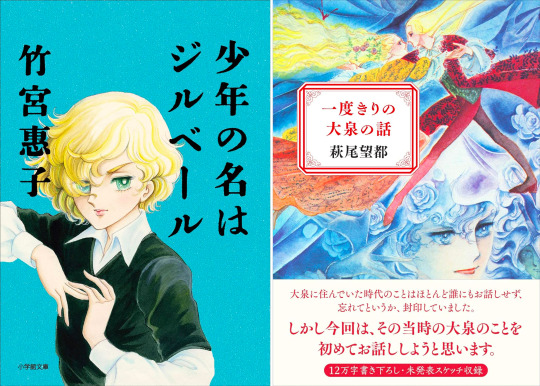
Keiko Takemiya and Moto Hagio, estranged since the late '70s, revealed details of their feud in autobiographic books: Takemiya's "Shonen no na wa Gilbert" (2019) and Hagio's "Ichidou kiri no Oizumi no Hanashi" (2021). The dispute, stemming from Takemiya accusing Hagio of plagiarism, was fueled by Takemiya's jealousy during a challenging creative and personal period. While Takemiya appears self-aware and analytical in her account, Hagio's book indicates she hasn't forgiven Keiko, revealing unresolved feelings. The publications triggered intense online debates.
Masuyama came from a sophisticated family that was very involved in arts and, from a young age, got familiarized with the world of music, literature, and movies. Her refined taste impressed Hagio and Takemiya. At a time when Japanese girls dreamed of Europe, Masuyama actually had friends living there and was up-to-date on the latest European trends. She also had a lot of knowledge of European cinema and literature.
As their rented house was old and rusty, Hagio and Takemiya started spending a lot of time at Masuayama's house across the street. She introduced them to films, songs, books, and paintings. It was Masuyama's taste -- including her interest in movies and books depicting gay romance and her desire for girls' comics to have bolder and riskier themes -- that helped to instill a passion in both artists to go further than the safe cliches usually depicted in shoujo works.
In 1970, editor Yamamoto convinced Takemiya to sign an exclusive contract with Shogakukan. The following year, Hagio also started publishing for Sho-comi and Betsucomi. Their work would attract a loyal fanbase, and aspiring manga-ka would flood their mailboxes. So Takemiya made a decision: to select female artists around her and Hagio's age to mentor and train at their shared home. Thus, the Oizumi Salon was born.
Despite attracting attention, Takemiya and Hagio's works were not always popular. In fact, they'd often rank last in readers' popularity polls, which tend to be all-deciding in manga magazines. But they persevered, and Yamamoto trusted them.

Keiko Takemiya aimed to establish herself with a top-rated series through "Pharaoh no Haka" (left) in order to garner the necessary respect from editors to write the series she wanted, "Kaze to ki no uta" (right). Despite her resolute efforts, "Pharaoh no Haka" never secured the top spot in Sho-comi's readers' poll, peaking at #2. Nevertheless, the series succeeded in elevating her fame and earning her the respect she sought.
In 1972, Hagio had an idea for a serial focused on a male European vampire. However, as she wasn't a famous artist, Yamamoto only allowed her to publish one-shots. So she came up with a plan: to write three interconnected standalone stories. To circumvent another restraint - shoujo editors' avoidance of male leads - she put the first story focus on Marybelle, Edgar's sister. Once Yamamoto realized what Hagio was doing, he was amused and allowed her to continue. And so, "The Poe Clan" series began. In 1974, Shogakukan finally started publishing their shoujo titles in compiled paperback format. In another proof of trust, Yamamoto chose Hagio's "The Poe Clan" as the first title of the Flower Comics imprint.
To everybody's surprise, "The Poe's Clan," in paperback format, was a groundbreaking success, almost instantaneously selling out its initial printing. At the time, Hagio had just started a new serialization, "The Heart of Thomas," a tragic gay love story set in an all-boys German school. As usual for her, the story wasn't all that popular with Sho-Comi's readership, and its lackluster results in the reader's poll almost got the series discontinued. But the notable success of "The Poe's Clan" tankobon assured editors, who allowed Hagio to continue the series. "The Heart of Thomas" went on to become another best-seller and a seminal shoujo title. It also attracted critical acclaim and a loyal fanbase to Moto Hagio, which in turn helped put the Year 24 artists -- who were pretty good at self-promotion -- in the spotlight.
Hagio, Takemiya, and several other "Year 24" authors drifted between being popular and underground. They had a sizable, loyal fanbase that followed them and turned several of their works into best-sellers. On the other hand, by finding a way around the usual shoujo traditions, they weren't particularly popular with the average shoujo reader, ordinary young girls across the country.
Their peculiar position forced them to be clever, so they could fulfill their creative desires as well as their editors' expectations, who were there to make sure the stories published were satisfying to the core readership. Takemiya wrote "Pharaoh no Haka," an Egypt-set romantic adventure, to be well-accepted so that she could then dedicate herself to doing what she truly wanted in "Kaze to Ki no Uta," a gay love story set in a 19th Century French boarding school.
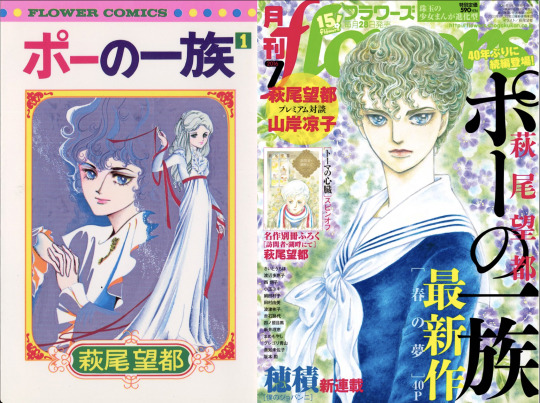
Initially overlooked in popular shoujo magazines, Moto Hagio gained success with "The Poe Clan" in compiled format, launching Shogakukan's Flower Comics imprint. Over time, she became a highly respected manga artist, the only manga-ka alongside legendary filmmaker Hayao Miyazaki to receive a Person of Cultural Merit recognition. In 2016, marking 40 years of the conclusion of her first hit, she released a new "The Poe Clan" chapter in Flower magazine, selling out the increased print run of 50,000 copies in a day. This success marked a significant shift for Hagio, who, despite not being a major magazine seller in earlier years, became a valuable asset to the struggling publishing industry. Following the one-shot, she released three more chapters and, in 2022, began a new sequel series.
Besides Takemiya and Hagio, several other notable shoujo artists who went on to become huge names used to frequent the Oizumi Salon and were part of the "Year 24 group." In the early '70s, most published their work on Shogakukan's titles, which had a "free policy" on storytelling compared to Margaret, Shoujo Friend, Nakayoshi, and Ribon. Then, as Shogakukan started being more strict to properly compete with the market leaders, several moved to newly launched Hakusensha titles Hana to Yume and LaLa. Influential names that were part of the movement included Yumiko Oshima, Yasuko Aoike, and Ryoko Yamagashi, among several others.
Despite their unorthodox preferences, they weren't necessarily trying to rebel against the system, they simply wanted to put out good quality work they believed in. Like other Japanese girls from that era, they were fascinated by Europe, and plenty of their stories took place on the continent. In 1972, Hagio, Takemiya, Yamagishi, and Masuyama made a 45-day trip to Europe, visiting the Soviet Republic, France, and several other countries, which had a profound impact on them. Still, their narratives were widely innovative. They often had male leads, introduced sci-fi, "boys' love," and other bolder genres to shoujo manga, and contributed to the evolution of shoujo illustration. Above all, this group of artists was the one who made clear to naysayers, once and for all, that shoujo manga is indeed an art form.
But while their influence in manga history is undisputed, other significant -- and much more commercial -- manga movements also shook the shoujo manga world during that decade.
A Need for Drama
When talking about '70s shoujo manga, it's common for minds to drift directly to iconic series from that time, like "Candy Candy" and "Rose of Versailles." But, unlike in present times, in that decade, the manga industry's focus wasn't on successful, long-running series but on the artists themselves.
As opposed to the struggling publishing marketing of today, major shoujo manga magazines all sold over 1 million copies during that decade. Manga in tankobon (standalone paperback) format was turning into a money-maker field, but being able to sell paperback was very much secondary compared to being a name capable of selling magazines. Keiko Takemiya and Moto Hagio, from the Amazing Year 24 Group, would go on to become household names and had best-selling series, but, at the time, they couldn't compete with the actual shoujo manga superstars who were the signboard artists of the Kodansha and Shueisha's shoujo titles, the ones who actually moved publications. These artists' work was the most significant indicator of what the mainstream readers wanted and aspired to back then.
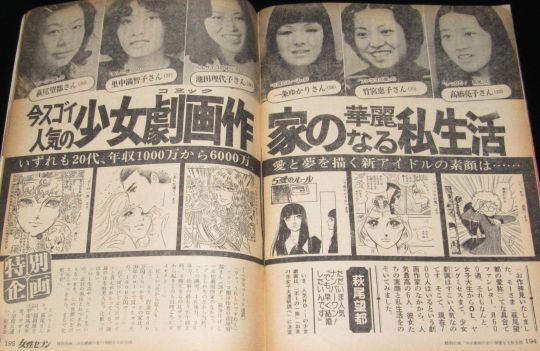
In a December/1975 issue, weekly Josei Seven spotlights the new generation of superstar shoujo manga artists: (l-to-r) Moto Hagio, Machiko Satonaka, Ryoko Ikeda, Yukari Ichijo, Keiko Takemiya, and Ryoko Takahashi. While contemporary manga-kas are highly discreet about their lives and do not even tend to show their faces, in the '70s, they were treated like superstars, and, in the article, the manga-kas openly discuss their love life and details of their high incomes, including how much they had in the bank and how much they spent on rent and daily utilities.
For Kodansha, the top shoujo artist was definitely Machiko Satonaka, who won the Best New Artist competition in 1964, when she was still a freshman in high school. There have been several high-schoolers making their debut in the industry throughout the decades, but, as the first, Satonaka caused a media frenzy. Her ascent gave confidence to countless other young women -- from "Glass Mask"'s Suzue Michi to Keiko Takemiya (who also won a smaller prize in the same competition) -- to pursue their manga careers.
The attention surrounding Satonaka, who went on to become a public personality with TV hosting gigs and other appearances, is another interesting, nostalgic phenomenon. In the past, it was common for manga superstars to have a strong media presence. Nowadays, the norm is the complete opposite: for manga-kas to be highly private, no matter how famous their work is.
In any case, Satonaka quickly proved herself to be more than a sensational news story as she created extremely popular mangas for Kodansha shoujo titles like Shoujo Friend and Nakayoshi. Her style, widely accepted by readers, became symbolical of the story-telling the '70s girls craved: extremely dramatic with emotionally driven plots and lots of bombastic twists and developments.
In his book on subcultures and otaku culture, sociologist Shinji Miyadai notes that '70s shoujo manga can be divided into very few categories. There is the category the Year 24 artists dominated -- which he defines as the "Moto Hagio domain" -- of works with a lot of artistic value, up-to-par with literature. And then there's the far more commercially viable "Satonaka domain," which represented the mainstream taste.
In the "Satonaka category," the artist depicts a stormy life story as a proxy experience for the readers. Of course, there are universal elements of love, friendship, and insecurity that girls can directly relate to. Still, these stories provide adventures that readers could never experience in the real world.
These facets of the "Satonaka domain" are present in almost all the best-selling, mainstream shoujo series of the '70s, like the revolutionary historical romance of "The Rose of Versailles," the dramatic rags-to-riches story of the beautiful orphan in "Candy Candy," and the rise of an ordinary girl to the top of the sports elite in "Ace wo Nerae." In all of these titles, you'll also spot other defining characteristics of '70s shoujo: the death of beloved characters and beloved female characters with voluminous blonde hairs and huge, sparkling eyes (a legacy of Macoto Takahashi, the illustrator who, throughout the '50s, created the art that directly influenced subsequent shoujo history).
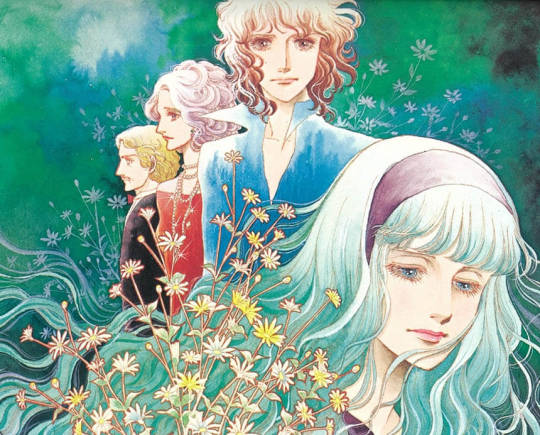
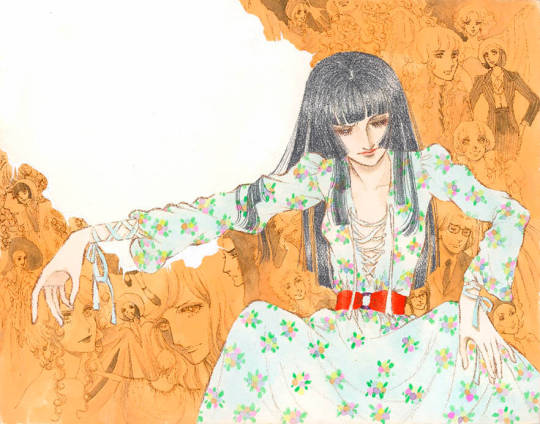
Yukari Ichijo was the most prominent Ribon signboard artist throughout the '70s, creating popular mangas like "Suna no Shiro" (left) and "Designer (right). Young girls across the country adored her work despite the adult drama in it.
Since these stories are extraordinary and dream-like, many of them use Europe or the US as their setting, another reflection of the times when Japanese youth dreamed with the West.
While Satonaka was Kodansha's star, Shueisha also had its top shoujo artists. For Margaret, it was Ryoko Ikeda who kept creating memorable dramatic manga after the conclusion of "The Rose of Versailles." Other classic '70s dramatic works published in the weekly included Kyoko Ariyoshi's ballet drama "Swan." Meanwhile, over at Ribon, no one shone brighter than Yukari Ichijo. Ichijo's works, which young girls across Japan devoured, contained a lot of adult drama with adult characters. Her 1974 manga, "Love Game," had a bed scene. One of her most celebrated works of the decade, "Suna no Shiro" (Sand Castle), dealt with incest. While Ichijo is the one who stood the test of time, another artist who also enjoyed great popularity in Ribon following this formula was Kei Nogami.
These mangas served as an escape for girls, who left their ordinary school life behind for a few hours to embark on extraordinary adventures. In contrast, one of the main genres in contemporary shoujo is unassuming, everyday high school romance. How could the shoujo segment go through such a drastic transformation? The reasons for that also dates back to the 1970s.
Part 3
#shoujo manga#vintage shoujo#otometique#yumiko oshima#keiko takemiya#yumiko tabuchi#hideko tachikake#machiko satonaka#yukari ichijo#ribon#1970s japan#1970s#year 24 group#moto hagio#vintage manga
37 notes
·
View notes
Text
Ribon Magazine and its Supposed "Landmine Feature"
I thought it would be worthwhile to bring up some semi-recent landmine discourse that happened over on JP Twitter, as it is a direct example of what I've previously discussed about what can happen when random things are labeled as "landmine".
One month ago, Ribon, a highly popular girls' magazine aimed towards a younger demographic, came under fire for "promoting landmine culture". The claim was that the Halloween special issue of Ribon was promoting "landmine women" by having one on the cover, which led to discussions from concerned people about the potential for young children to discover the self-harm culture of landmine girls from such a magazine promoting it.
The initial tweet that sparked the discussion showed a photo of the cover, with the caption:
"Current Ribon, which has manga about landmine women who drink Strong Zero with a straw."

"Was Ribon always like this? I have a feeling this is dangerous..."
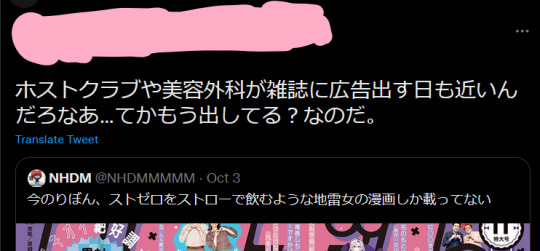
"I suppose the day where host clubs and cosmetic surgeons are advertised in such magazines will be here soon. Or is it already?"
Here is the full image of the cover in question:

This is a direct example of what can happen by assuming and labeling completely harmless and unrelated things as landmine from appearances alone.
Ribon was not showcasing a landmine girl on the front, nor were the contents of the magazine promoting landmine culture. The concern stemmed solely from the fact the character on the cover was drawn with what are now widely considered to be "landmine traits", those being, wearing Girly, twintails, and bow accessories, leading to people assuming that this depiction was the endorsement of landmine culture.
This issue of the magazine actually had a feature on Yamikawaii, which is completely unrelated.
Here is an article about Ribon magazine that includes this topic if you'd like to read a little further.
Landmine culture still has an overwhelmingly negative perception among the public, to the point where a beloved girls' magazine came under scrutiny for possibly exposing children to harmful subject matter for having a girl with twintails wearing something vaguely Girly-looking on the cover. Where could people have possibly gotten these negative impressions from, if landmine is now "widely considered to be a positive term", as it has been claimed?
Once again, please don't label random things as landmine, as it can contribute to the drastically altered perceptions of that thing in the public eye due to the negative associations that make up the landmine stereotype and culture.
296 notes
·
View notes
Photo
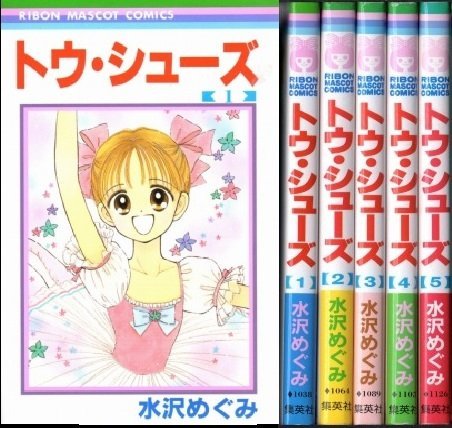
Today in Manga History
December 28th, 1996
Toe Shoes begins serialization in Ribon Magazine
Written and illustrated by Megumi Mizusawa
21 notes
·
View notes
Text
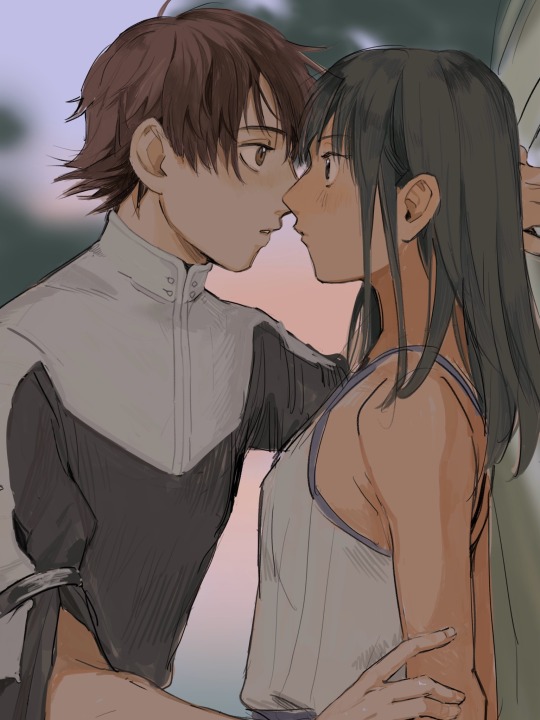
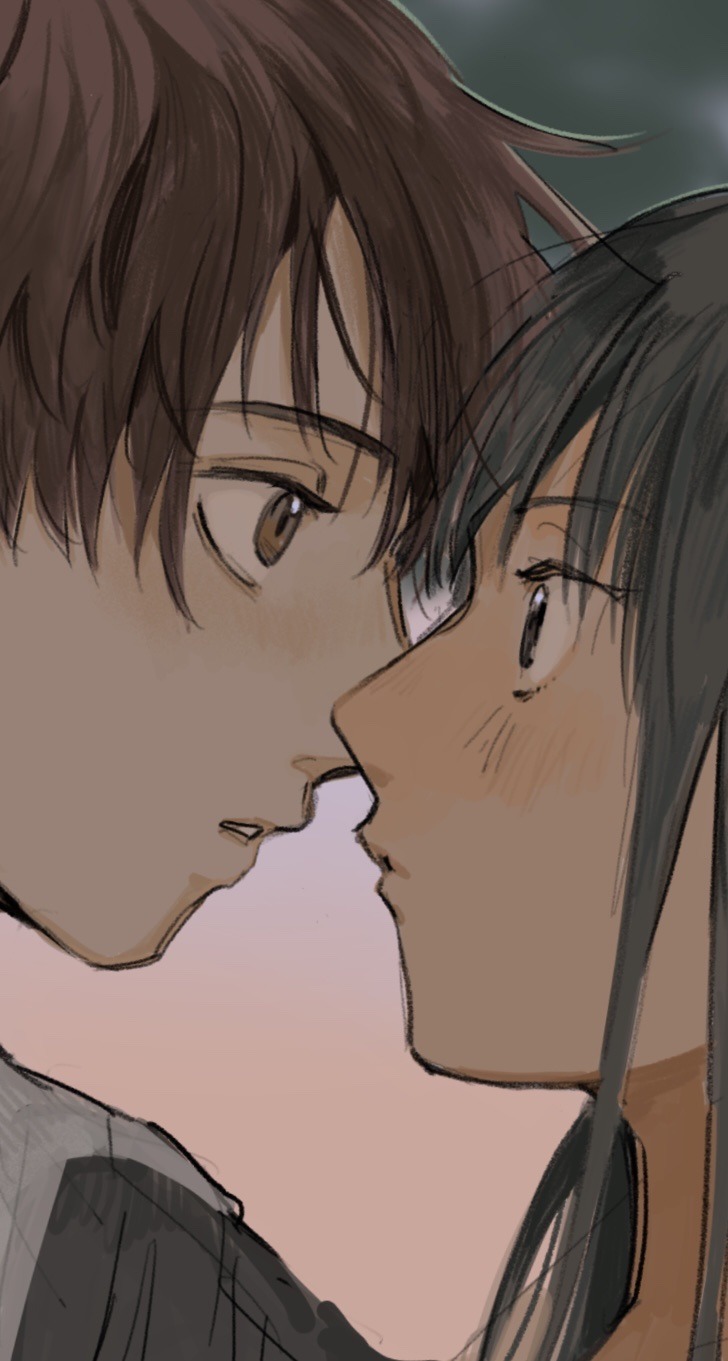
🔥💥💫🔥🌟💥
#I COUODNT THINK OF A GOOD CAPTION IM JUST A MESS OVER THEM#drawing them face to face will always be my favorite thing it’s just so T_T🫴🫴#ribon#rickyun
179 notes
·
View notes
Text
youtube
Watch the American Climate Leadership Awards 2024 now: https://youtu.be/bWiW4Rp8vF0?feature=shared
The American Climate Leadership Awards 2024 broadcast recording is now available on ecoAmerica's YouTube channel for viewers to be inspired by active climate leaders. Watch to find out which finalist received the $50,000 grand prize! Hosted by Vanessa Hauc and featuring Bill McKibben and Katharine Hayhoe!
#ACLA24#ACLA24Leaders#youtube#youtube video#climate leaders#climate solutions#climate action#climate and environment#climate#climate change#climate and health#climate blog#climate justice#climate news#weather and climate#environmental news#environment#environmental awareness#environment and health#environmental#environmental issues#environmental justice#environment protection#environmental health#Youtube
2K notes
·
View notes
Text

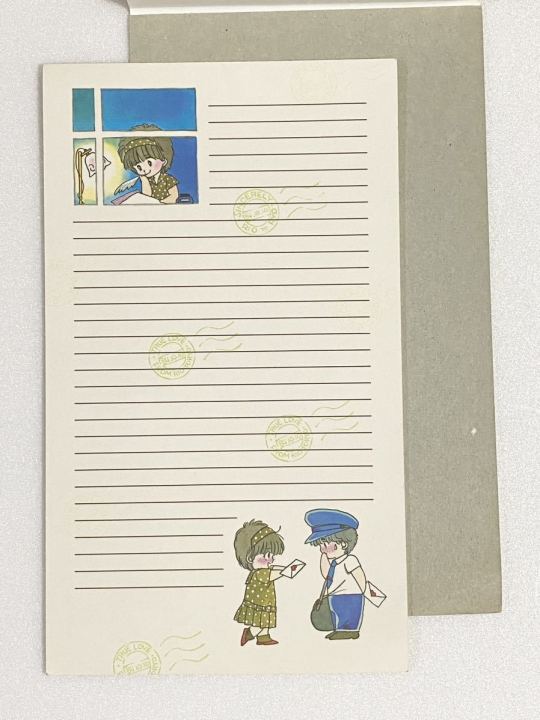
昭和 りぼん 付録 本田恵子 レターセット
91 notes
·
View notes
Text

218 notes
·
View notes
Text
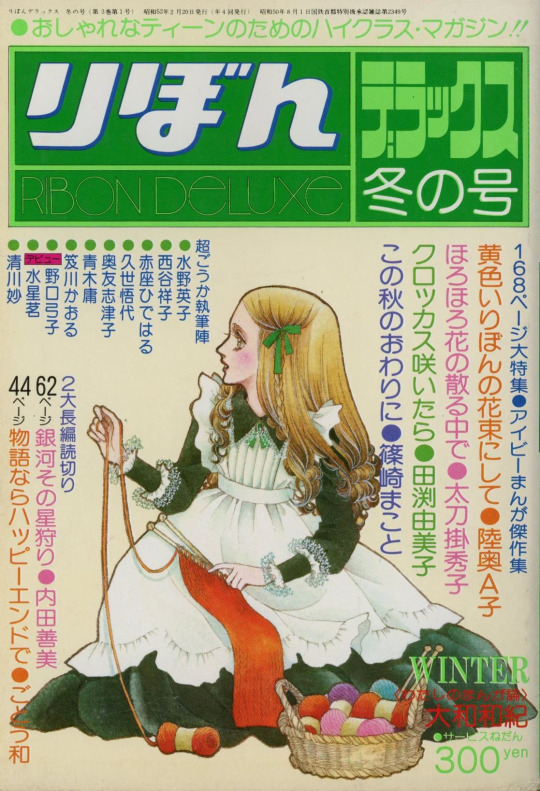
Ribon Deluxe (りぼんデラックス) / Shūeisha (集英社) / Winter 1977 issue
#vintage manga#shojo manga#retro shojo#70s manga#ribon#ribon magazine#shueisha#issue month: winter#りぼんデラックス#集英社
153 notes
·
View notes
Text

ご近所物語 (Neighborhood Story), Ai Yazawa
152 notes
·
View notes
Text

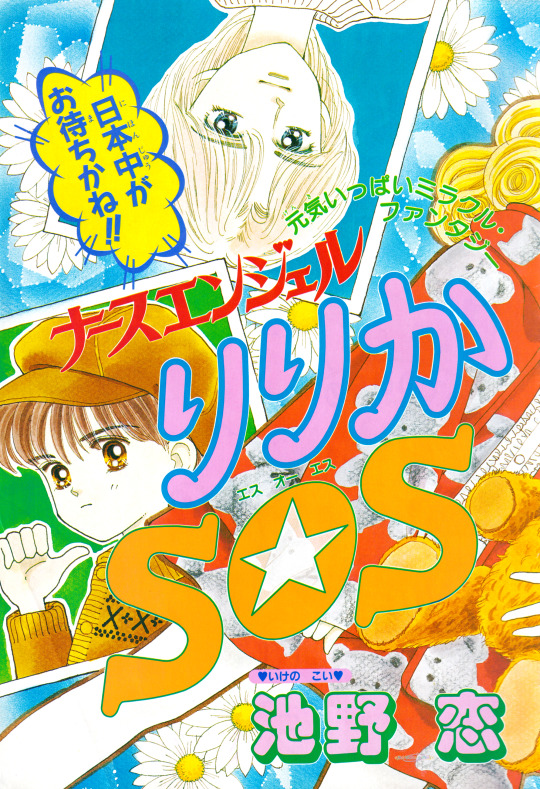

Series: Nurse Angel Ririka SOS
Artist: Ikeno Koi
Publication: Ribon Magazine (01/1995)
Source: Scanned from my personal collection
#nurse angel ririka sos#nurse angel ririka#ririka sos#moriya ririka#uzaki seiya#nozomu kanou#kanon#helena oujo#mizuhara karin#kazami anna#ikeno koi#koi ikeno#akimoto yasushi#yasushi akimoto#scan: hotwaterandmilk#ribon#shoujo manga#shoujo#shojo manga#shojo#mahou shoujo#magical girl#magical girl manga#retro manga#classic manga#manga art#manga scan#first chapter colour pages!#RIRIKA... SOS!#this one really takes me back
162 notes
·
View notes